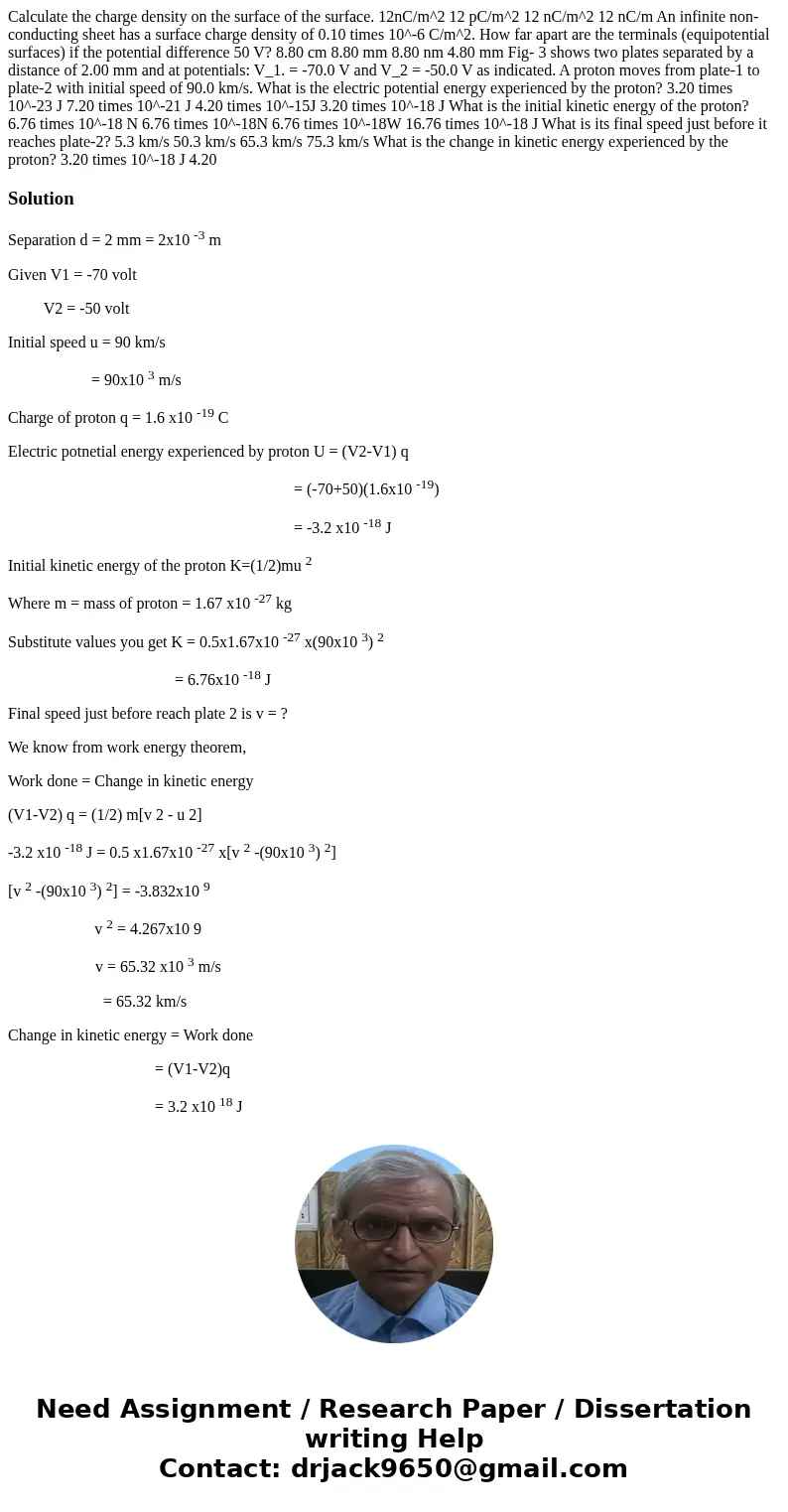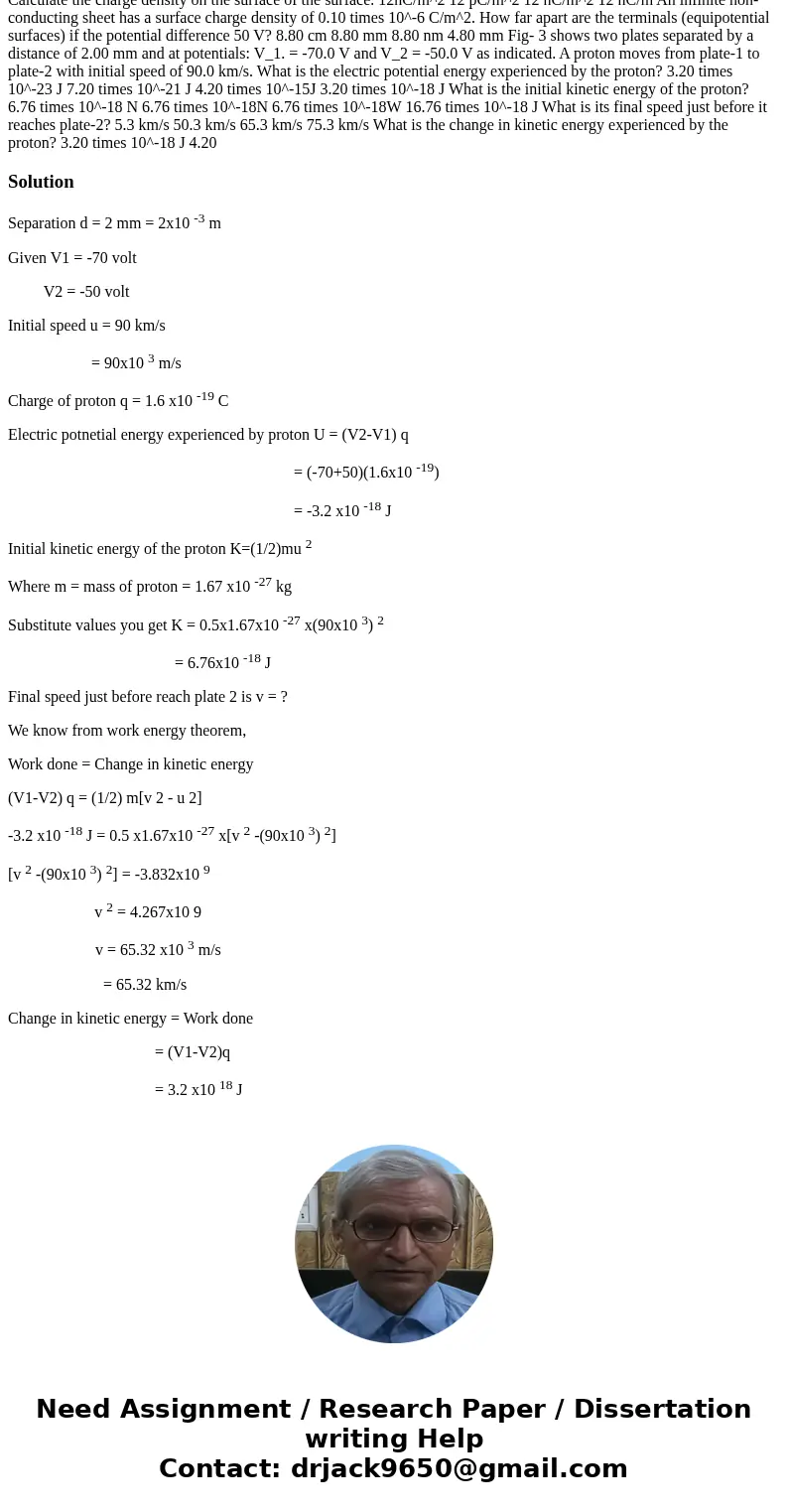Calculate the charge density on the surface of the surface. 12nC/m^2 12 pC/m^2 12 nC/m^2 12 nC/m An infinite non-conducting sheet has a surface charge density of 0.10 times 10^-6 C/m^2. How far apart are the terminals (equipotential surfaces) if the potential difference 50 V? 8.80 cm 8.80 mm 8.80 nm 4.80 mm Fig- 3 shows two plates separated by a distance of 2.00 mm and at potentials: V_1. = -70.0 V and V_2 = -50.0 V as indicated. A proton moves from plate-1 to plate-2 with initial speed of 90.0 km/s. What is the electric potential energy experienced by the proton? 3.20 times 10^-23 J 7.20 times 10^-21 J 4.20 times 10^-15J 3.20 times 10^-18 J What is the initial kinetic energy of the proton? 6.76 times 10^-18 N 6.76 times 10^-18N 6.76 times 10^-18W 16.76 times 10^-18 J What is its final speed just before it reaches plate-2? 5.3 km/s 50.3 km/s 65.3 km/s 75.3 km/s What is the change in kinetic energy experienced by the proton? 3.20 times 10^-18 J 4.20
Separation d = 2 mm = 2x10 -3 m
Given V1 = -70 volt
V2 = -50 volt
Initial speed u = 90 km/s
= 90x10 3 m/s
Charge of proton q = 1.6 x10 -19 C
Electric potnetial energy experienced by proton U = (V2-V1) q
= (-70+50)(1.6x10 -19)
= -3.2 x10 -18 J
Initial kinetic energy of the proton K=(1/2)mu 2
Where m = mass of proton = 1.67 x10 -27 kg
Substitute values you get K = 0.5x1.67x10 -27 x(90x10 3) 2
= 6.76x10 -18 J
Final speed just before reach plate 2 is v = ?
We know from work energy theorem,
Work done = Change in kinetic energy
(V1-V2) q = (1/2) m[v 2 - u 2]
-3.2 x10 -18 J = 0.5 x1.67x10 -27 x[v 2 -(90x10 3) 2]
[v 2 -(90x10 3) 2] = -3.832x10 9
v 2 = 4.267x10 9
v = 65.32 x10 3 m/s
= 65.32 km/s
Change in kinetic energy = Work done
= (V1-V2)q
= 3.2 x10 18 J


 Homework Sourse
Homework Sourse